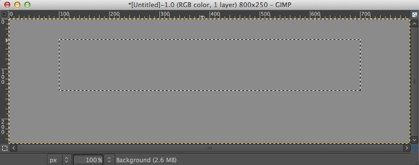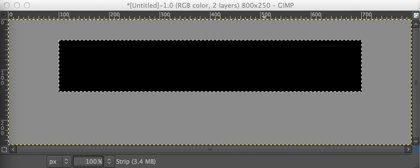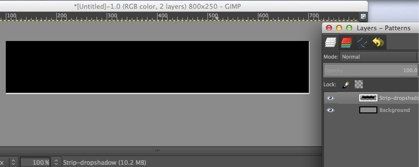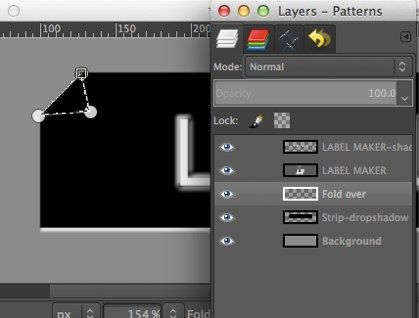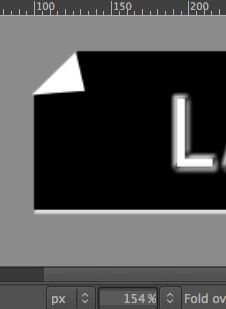In this quick, fairly simple GIMP project, you will create the effect of text having been carved into a textured surface using layers.

Some techniques you will use in this project:
Layers
Text layers
Merging layers
Selection by color
Alpha channels
Noise generator
Gaussian blur
Open a texture image as the Background layer. I used a marble texture that I downloaded from Image*Afterhere. Select the Text Tool and create a text layer with your desired text and center it. Use a bigger, bolder font. I chose Futura Ultra-Bold Condensed, 196 pt.

Create a new empty layer, Layer > New Layer…, name it Gray. Use the Bucket Fill Tool to fill it with a medium grayish-pink color. Drag it under the Background layer in the Layers pallet.
With the Text layer active, make a selection of the text. Use the Select by Color Tool and click on the text.

Hide the Text layer by unchecking its ‘eye’ icon in the Layers pallet. Select the Background layer and add transparency to it, Layer > Transparency > Add Alpha Channel. Clear the selection, Edit > Clear. The Gray layer should now be showing through the text.

Add a new layer, named Black. Invert the selection, Edit > Invert Selection. Reset the color swatches to their defaults, and fill the Black layer with black, Edit > Fill with FG Color.

Duplicate the Black layer, Layer > Duplicate Layer. Name the copy White. Fill the White layer with default white, Edit > Fill with BG Color.

Deselect all, Select > None.
With the White layer selected, choose the Move Tool, slide the White layer up slightly, one or two pixels.
Do the same with the Black layer, except move it straight down. (Note: I have exaggerated this a bit for clarity.)
Select whichever of the Black layer or the White layer is on top, then merge them together into one layer, Layer > Merge Down. Name the merged layer Shadow.

Apply a slight Gaussian blur with a radius of about 3.5 pixels to the Shadow layer, Filters > Blur > Gaussian Blur… . Drag the Shadow layer between the Background layer and the Gray layer.

Finally, add a little texture to the carved surface within the letters.
Select the Gray layer. Add some noise, Filters > Noise > Noise Generator. In the dialog, click the Poisson tab, 1 Photon, Luminance noise only is checked, Gamma correction is not checked.

Apply a Gaussian blur with a radius of 2 pixels.

To extend the project, you might like to use the original textured background instead of the Gray layer. Make some slight brightness adjustments and apply a little blur.


